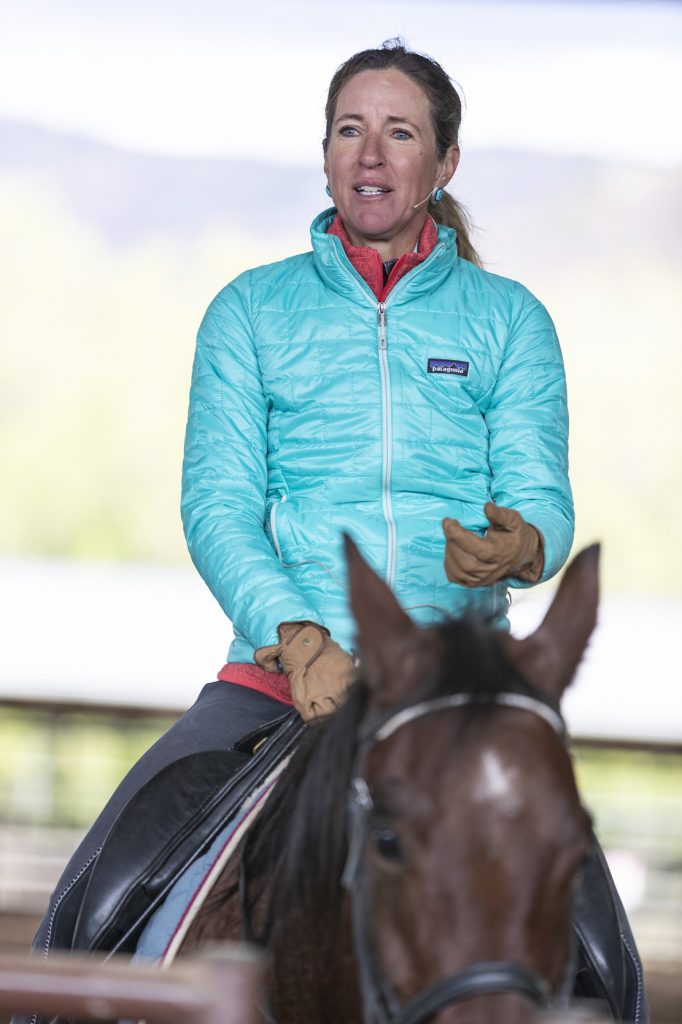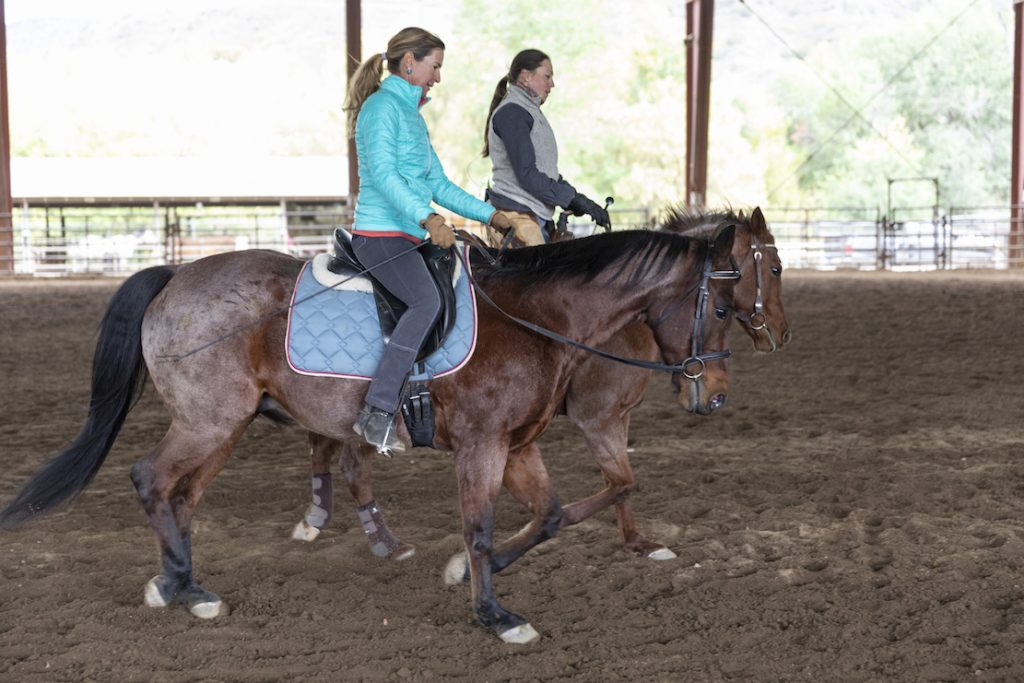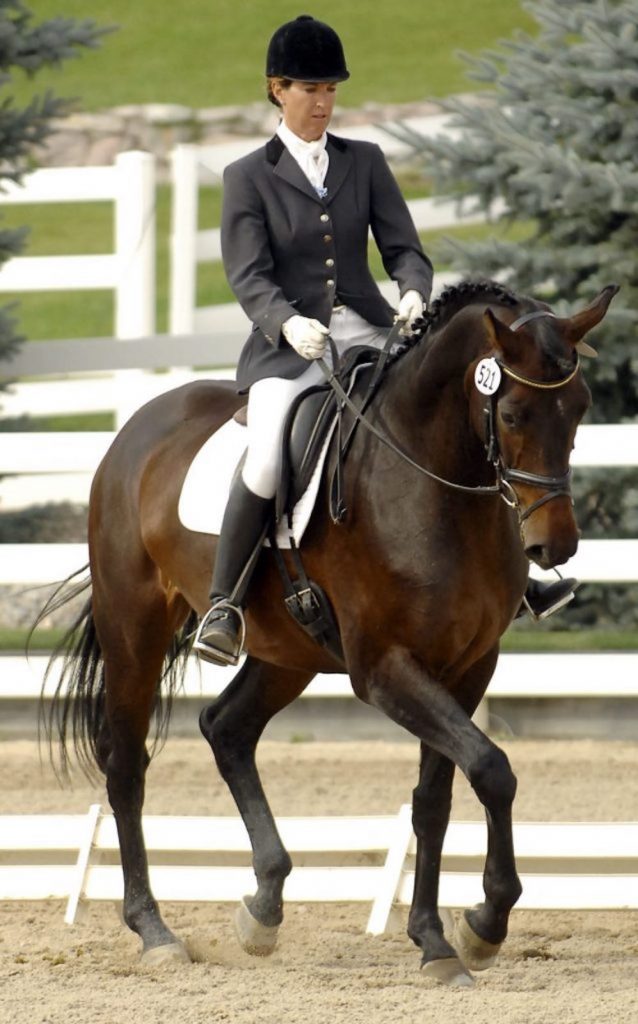
Katrin Silva will present at the 2019 BHPS
Editor’s Note: 2018 & 2019 Best Horse Practices Summit presenter Katrin Silva grew up riding dressage in Germany before moving to the United States at age 19 to learn to ride Western. She’s been riding both disciplines for the last twenty years and is a regular guest columnist for Cayuse Communications, with a new book “Dressage for the Rest of Us.” She lives in New Mexico where she works with dressage and Western clients. Visit her blog here.
The Imperative Trap
Words are the source of misunderstandings.
Antoine de Saint-Exupéry
Katrin writes:
I’ve been a professional horsewoman since age 18. I also attended college and graduate school, earning degrees in literature and linguistics. Over time, I’ve found that what’s essential in language and learning is for horsemanship, too: Communication. A rider’s seat, legs, reins, and voice are the words that form sentences. There are times when the conversation flows well. Other times, horses and riders don’t understand each other and both parties end up frustrated.
One-sidedness is the most common obstacle to good horse-rider communication. We’ve all experienced this type of situation, especially in classroom settings: the teacher does the talking while the students sit, not agreeing, not disagreeing, and not engaged either way.
In a very similar manner, information tends flow from rider to horse, not back and forth. If aids were words, they’d be imperatives.
A nudge with both legs says: “Pick up a trot now!”
Just as often, the imperative starts with “Don’t!” as in:
“Don’t lean on my hands!” or “Don’t go until I tell you!”

Katrin Silva and Amy Skinner
Some riders talk exclusively in imperatives. In fact, strings of imperatives. The only answer these riders accept is instant and unreflective obedience. The horse-rider communication becomes a one-way street, a mechanical process of pushing buttons.
Call it the imperative trap.
It’s easy to slip into the imperative trap. We learn from an early age that teachers tell us what to do, and that good students do what they’re told. Many of us have learned that when the teacher asks for input, our best bet is to provide what we think she’d like to hear, instead of saying what we really think.
Riding instructors typically use imperatives: “Heels down!” “Keep your hands quiet!”
It’s no surprise that many of us reflect this technique with our horses. We want our horses to learn, so we talk to them like our teachers have talked to us.

Let the conversation be a dialogue, not a monologue
While it’s hard to break out of these deep grooves of habits, it’s an essential shift if you want to communicate with horses in a mutually respectful way.
How can we become better communicators, not just drill sergeants or button pushers?
- Talk less. Listen more.
Good teaching is a two-way street – a dialogue, not a monologue. As a rider, it’s easy to slip into the habit of always doing something, of constantly telling the horse what to do, or correcting what he does wrong. To increase the dialogue, we have to consciously open ourselves to what the horse has to say. To do this, check in with the horse’s body and mind in between requests.
- How does his back feel under me?
- How does his mouth feel in my hands?
- What is he thinking about?
- If he could talk, what would he tell me?
- Based on his feedback, can adjust what I say next and how I say it?
- Speak more softly than you think you should. Shut up sooner than you think you can.
Focus on the give, i.e. the cessation of the aid instead of on the aid itself. The giving phase of the half-halt, the return to a neutral, softly hovering or gently hugging leg position after a leg aid, the return to a softly following seat after a driving aid.
These are the moments when learning happens. It’s when horses say “Ah-ha! I got it”
Good timing means giving when your horse is giving to you. Or, even better, when he is about to give to you.

Silva teaches in and around Santa Fe, NM
Pay attention to how fleeting your aids can be. Be willing to take a chance. Could you give a fraction sooner? Could you use a softer aid for a shorter time? This is how we learn to more accurately read our horses’ feedback. If you give too soon, it’s no big deal. Just repeat what you asked in a louder, clearer voice, then back off again. If you don’t give soon enough, though, the horse never learns that responding to a lighter, briefer aid is possible.
- Sometimes, the best response is silence
When horses are doing things we don’t want them to do, it is sometimes best to ignore the behavior. This is especially true for green horses who are just becoming familiar with new concepts, like moving away from a rider’s leg. Time spent arguing or fighting with our horses is wasted time. The only thing horses learn is how to fight harder.
I can’t get too upset with the horse for trying out a range of responses to a new type of touch, like kicking out against it. For safety reasons, I may have to gently discourage the behavior I don’t want, but I try to ignore as much of it as I can. While doing this, I’m looking for the slightest bit of correct response. As soon as I get a step away from the leg, I take my leg off immediately and praise the horse. I may even quit for the day if it took us a while to get to that point.
The best teachers I’ve had did much more than tell me what to do. They gave me time to think, to question, to disagree. They gave me confidence instead of undermining it. They helped me enjoy learning. Let’s do that for our horses.
Love this Katrin! “Shut up sooner than we think we can” is to the point and oh so correct.